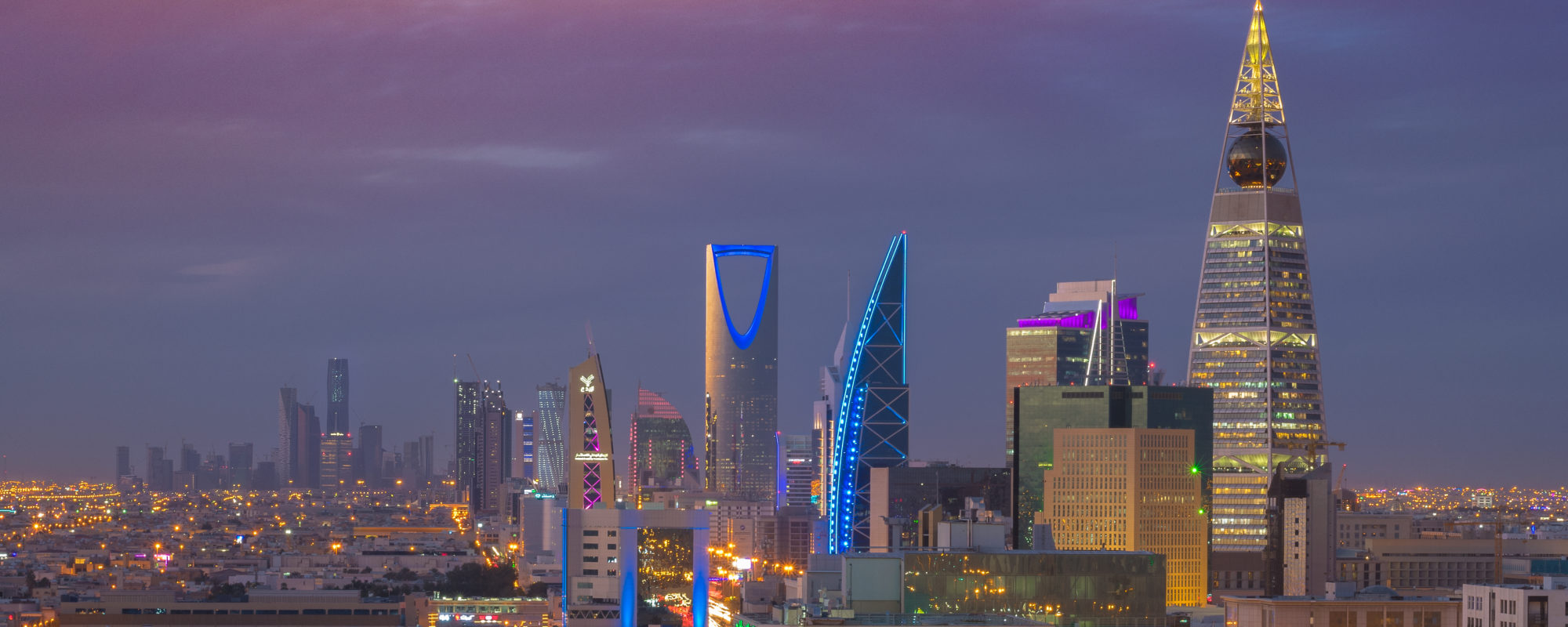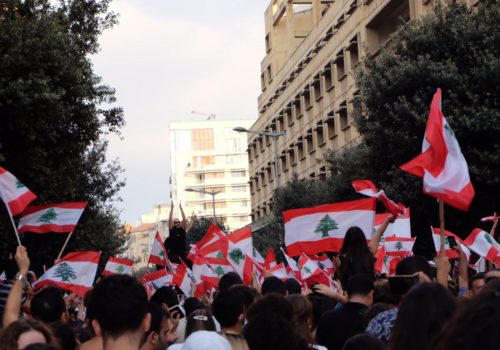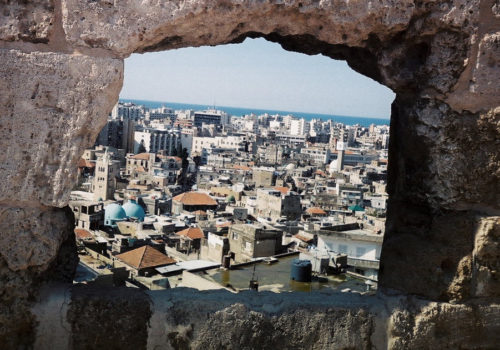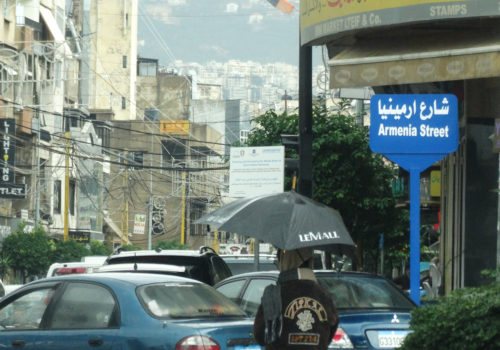This was supposed to be a momentous year for Shahad. She had worked hard for the past two years at a Riyadh-based company, moving to the capital from Jeddah by herself to take the job—an unusual step for a young Saudi woman. Now she had secured a government scholarship that would allow her to pursue a Masters degree at the Johns Hopkins University’s School of Advanced International Studies (SAIS) in Washington.
Then Covid-19 struck. The government instituted a strict curfew on March 15, shuttering malls, restaurants and cafes, and prohibiting gatherings of more than five people. Shahad’s scholarship was tied to her new job at a training institute for the Foreign Ministry, but in those early days she couldn’t leave her house to finalize her contract with her new employer. Even when that hurdle was overcome, the US embassy’s consular services remained closed, making it impossible for her to secure a visa. Finally, SAIS moved a pre-term course she needed to take online due to the pandemic—but her scholarship only supports in-person learning.
“All the plans I had been preparing for this year have been changed or canceled or delayed,” she said.
In conversation after conversation, Saudi friends and contacts told me similar stories. An aspiring actor has seen his shows canceled for the rest of the year and retreated to his family home to write scripts. A start-up business owner has had to shelve plans for a promising round of venture capital financing. And a policy researcher has been frustrated in his efforts to conduct interviews about the impact of the virus due to the strict curfew.
The kingdom has been hit hard by the coronavirus, which forced a months-long shutdown of many businesses and thrust the economy into recession. The government’s ambitious plans for 2020 have also been waylaid as new austerity measures promise to delay high-profile mega-projects championed by Crown Prince Mohammed bin Salman. The straitened circumstances also threaten to widen the gap between the kingdom’s haves and have-nots, and exacerbate existing tensions between the state and traditional business class. Saudi Arabia is being forced to confront the challenges of economic and societal change sooner than anyone predicted as the guardrails provided by its massive wealth are removed.
Saudi Arabia’s aggressive efforts to enforce social distancing initially succeeded in limiting the spread of the virus. But as the government relaxed restrictions and the population tired of confinement, those early gains were reversed. The kingdom did not record over 1,000 new cases in a single day until April 18. The government eased the curfew a week after that date, and new cases surged to over 3,000 per day by early June. Saudi Arabia has now seen over 240,000 Covid-19 cases since the pandemic began.
“The great danger is not theoretical, it is now real,” wrote columnist Mahmoud Abu Talib in the daily Okaz on July 7. “It is not a secret that the intensive care units in Riyadh and Jeddah have become crowded with cases… and that means pushing the health system to the danger zone.”
Saudi Arabia can take solace in some aspects of how the pandemic has played out, however. The kingdom has reported only 2,325 deaths from the virus, a case fatality rate far below most other countries’. The number of new cases is also trending downward, having dropped below 3,000 per day on July 11 and stayed there for the past week.
Three “seeding patterns” were responsible for the initial spread of the coronavirus in Saudi Arabia, according to a paper published in the medical journal The Lancet in May. First, the movement of Saudi and foreign pilgrims to holy sites in Mecca and Medina sped the transmission of the virus. Second, returning Shiite Saudi pilgrims who had visited Iran and Iraq brought back the virus back with them. Finally, the routine travel of Saudis and foreigners around the kingdom, much of it centered in Riyadh, accelerated the pandemic.
Of those three patterns, the return of Shiite pilgrims from Iran and Iraq in the first days of the outbreak—before the surge of cases in mid-April—played the largest role in accelerating transmission of the virus within the kingdom. That was because Saudi Arabia’s efforts to track and quarantine returning pilgrims “proved inefficient initially owing to non-direct routes of travel to Saudi Arabia through [other] Gulf Cooperation Council countries,” the researchers wrote. In other words, the pilgrims would first travel to countries like Oman or the United Arab Emirates before returning to Saudi Arabia, making it difficult for the government to assess whether they had been to a country with a high prevalence of the virus.
The virus has found many other ways to penetrate Saudi Arabia in the subsequent months. The holy cities remain hotspots—even when the government lifted the country-wide curfew on June 21, restrictions remained in place in Mecca. In an effort to disrupt this “seeding pattern,” the government severely restricted this year’s hajj to those already in the kingdom, prohibiting the over 2 million pilgrims who travel annually from across the Muslim world from attending the pilgrimage.
But when it comes to the routine travel of Saudis and foreigners around the kingdom, the government has steadily relaxed restrictions. Much to the consternation of public officials and commentators like Abu Talib, many Saudis responded to the lifting of the curfew and opening of gyms, cafes and restaurants by abandoning social distancing measures. The Health Ministry spokesman blamed residents’ lack of compliance with government regulations for the surge of cases in mid-June, saying that the virus’s spread could accelerate “if members of the public continue to not adhere to preventative measures.”
Adherence to social distancing measures remains spotty. In conversations with friends and contacts, it often seems as if people are living in two different universes: Some remain very worried about the high number of daily cases and have largely confined themselves to their homes or remote parts of the kingdom, while another group has largely returned to normal life, congregating in public places and flouting the requirement to wear a mask.
Some are already chafing at the contrast between the gaudy sums spent abroad at a time of cost-cutting at home.
Sometimes, these two universes exist in the same house. One friend who lives in Jeddah but works in Riyadh described how his wife came to live in his Riyadh apartment, which he shares with a foreigner. They needed to establish new divisions inside the apartment, he said, to give her her own private space. And while my friend and his family wear gloves when they leave the apartment and mostly limit their trips to the grocery store, their roommate regularly goes out to restaurant to meet friends.
That seems like a difficult way to ride out a pandemic, I observed. There was a brief pause. “It has been very interesting,” he said diplomatically.
* * *
For Crown Prince Mohammed bin Salman, the pandemic has necessitated a dramatic change to his plans to restructure the kingdom’s economy away from dependence on oil exports. The global economic downturn represents a twin shock to the government’s finances: Saudi Arabia has suffered both due to a fall in investment and tax revenues caused by the recession itself, and the drop in the price of oil, which has plunged since the beginning of the year. While lower energy costs mitigate the effects of recession in most countries, it only magnifies the economic blow in oil producers like Saudi Arabia.
As a result, the International Monetary Fund forecast last month that the economy will contract by a whopping 6.8 percent in 2020. The kingdom went into cost-cutting mode: The finance minister said in May that “painful” steps were necessary, and subsequently announced austerity measures valued at $26.6 billion, including tripling the value-added tax (VAT) to 15 percent and ending a cost-of-living allowance for state employees.
It’s not just the crown prince’s mega-projects that will be affected by these cuts. The austerity measures are also reverberating across the private sector, which still depends in large part on government spending to stimulate demand.
Majed, the manager of a small solar energy company, has suddenly found himself contemplating a difficult future. His clients have been struck hard by the recession and he estimates that not a single one has paid an invoice since March. All the company’s employees have taken half salaries and management hasn’t taken any salary at all for the last two months.
He’s already worrying what will happen when the company finishes one of its largest projects next month and he sends an invoice to a client he knows is struggling badly. “It’s the biggest payment, and I think I’m going to have to fight for it,” he said. “We have to pay our subcontractors, we have to move on, but I don’t know how I’m going to clear this payment.”
Government policies have only made his job tougher, Majed says. In theory, his company is well-placed to benefit from a recession: Saudi Arabia’s worsening fiscal situation should make it more likely to end energy subsidies, enabling him to make the case to businesses that solar energy is their cheaper long-term option. The kingdom did the reverse instead, slashing the retail price of fuel in May. “When I tell [potential clients] you should invest in solar because the price of electricity and diesel is only going up, that rings false now,” he said.
The VAT increase, which amounts to a tax hike on Saudi consumers, represented another blow. Majed fears it will further weaken his client base, making it even more difficult to win new projects and collect his outstanding invoices. Even in official media, columnists critiqued the move for further eroding Saudis’ purchasing power during a time of hardship.
Writing in Okaz, the columnist Khalid al-Sulayman first called for a delay in the increase of the VAT, and then took aim at commentators who have attempted to defend the decision. Those analysts “want to convince society that some of these decisions… are good and beneficial,” he wrote, “even when policymakers describe their decisions as painful and imposed by a passing reality, and would not have been taken under normal conditions.”
Even as the recession has derailed aspects of Mohammed bin Salman’s agenda, the crown prince has attempted to seize opportunities presented by the crisis. Since the beginning of the pandemic, the kingdom’s sovereign wealth fund, known as the Public Investment Fund (PIF), has gone on a buying spree of devalued American and European companies. The PIF has invested in everything from Facebook to the entertainment company Live Nation to the cruise line operator Carnival. Meanwhile, it is currently bidding to take over the famed English soccer club Newcastle United, in a move that has spurred public debate over Saudi Arabia’s human rights record.
Since Mohammed bin Salman became chairman of the fund in March 2015, it has seen the assets under its management rise to over $300 billion, roughly doubling its assets since 2016. The crown prince has announced a goal to increase the fund’s assets to more than $2 trillion by the end of the decade.
Some Saudi businessmen grumble that the PIF’s growing reach and the increase of the VAT are both part of a long-term political project that aims to eliminate them altogether. The PIF’s investments don’t just stay overseas—Saudi Arabia has been able to use its financial leverage over international companies in its portfolio to promote joint ventures back home. To name just a few, it signed a joint venture with AMC Theatres to construct cinemas in the kingdom, established a company to invest in agriculture and livestock production, and owns the kingdom’s mega-projects. Few businesses can compete with the massive resources government-owned companies can muster—and some businessmen worry the PIF’s recent buying spree heralds the creation of firms that will drive them out of new sectors.
Before the pandemic, Saudi Arabia had a financial cushion that both allowed it to pursue its economic restructuring plans and lightened the blow for those losing out under the new order. But since the beginning of the crisis, the government has quietly removed 2 million people from a welfare program designed to help low- and middle-income Saudis cope with the impact of subsidy reforms and the imposition of the VAT. In the absence of a quick recovery, the divide between the winners and losers from Vision 2030—the plan to diversify the economy—will only become starker.
Some are already chafing at the contrast between the gaudy sums spent abroad at a time of cost-cutting at home. “Austerity measures for citizens, rising prices and the imposition of the VAT, and the cancellation of the cost of living allowance,” one Twitter user wrote. “But on the other hand, we hear about deals to buy soccer clubs, arenas, and fake [mega-] projects.”
Such criticisms will remain even after the pandemic has passed. As it looks to the future, the Saudi government faces the unenviable challenge of pursuing its reform agenda while also maintaining the generous welfare system to which its citizens have become accustomed.
Photo credit: B.alotaby, Wikimedia Commons




